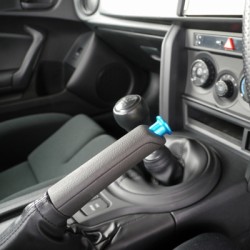Vibra Technics Engine Mount
These engine mounts are specifically designed to give uncompromising performance for all forms of competitive motorsport. They are tuned to give the maximum level of control over engine movement under the most extreme driving conditions.
The use of a natural rubber insulator element gives vastly superior comfort and isolation from engine vibration over inferior aftermarket urethane or "solid" mounts. They also do not suffer from the problem of the engine sitting too high which can happen with OEM style mounts made in harder rubber.
Price is for single mount. Two are required for a car set.
This product is compatible with the following vehicles
| Vehicle Make | Vehicle Model | Vehicle Variant | From | To | Engine | Notes |
| Nissan | 300 Series | 370Z | 2009 | VQ37VHR | 3.7L Z34 - RWD Petrol | |
| Nissan | 300 Series | 370Z | 2009 | 2014 | VQ37VHR | 3.7L Roadster Z34 - RWD Petrol |
| Nissan | 300 Series | 370Z | 2013 | 3.7L Nismo Z34 - RWD Petrol |
It was realized in the early 1990's that there were some fast and expensive sports cars being built with fairly crude engine mountings and that little was available for the specialist car manufacturer when it came to a design and supply service for small numbers of engine mounting systems. Vibra-Technics Automotive was originally established to fill that gap. Subsequently racing and fast road saloon car mounts were developed for a variety of makes and this has grown the business to where Vibra-Technics are offering over 75 specific products for high performance cars with another 18 general products which can be used in a variety of applications from ATV's to V8 engined kit cars.
Vibra-Technics products are manufactured primarily from natural rubber compounds and occasionally from blends of synthetic and natural rubber to give particular properties for specific applications. Extensive experience and testing in all kinds of environmental conditions by Automobile Manufacturers has shown that only natural rubber compounds give optimum performance and durability (which is why it is still universally used today by every car manufacturer). Where the rubber needs to be attached to metal components, this is achieved by chemically bonding the rubber to the metal during the molding process, using the latest chemical adhesive systems.

























